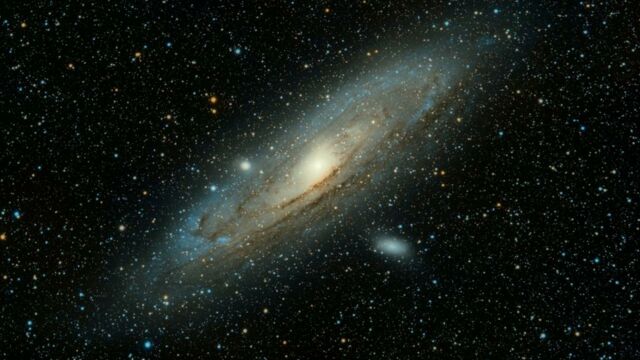Discover these amazing facts about our Solar System, they will blow your mind

If you know how many planets make up our Solar System, do you also know these anecdotes about it? They will surprise you!
Located in the Orion Arm, 26,100 light-years from the center of the Milky Way, our Solar System, home to the Earth and the Sun, is around 4.5 billion years old. Made up of 8 planets, since Pluto was demoted to a dwarf planet in 2006 (tough!), a whole host of interesting facts characterize it. Find out what they are.
Discover our latest podcast
Planets before the asteroid belt
In our Solar System, all the planets are aligned around the Sun on the same imaginary plateau. There is no planet 'higher' or 'lower' than any other. As for the Sun, its mass represents 99.8% of the system. That's all there is to it!
More under this adMore under this adMercury
It is the closest planet to the Sun, the smallest and the fastest. It orbits the Sun in just 3 months. But as unlikely as it may seem, there is ice on Mercury! It lies in the shadow of craters and is thought to have been transported by meteorites.
Venus
It is the only planet without a natural satellite. Venus is also one of only two planets to rotate in a clockwise direction, all the others being counter-clockwise. Another interesting fact is that it rotates on itself every 243 Earth days, and around the Sun every 225 days, which means that on Venus a day is longer than a year. It's a bit like the planet of contradiction.
More under this adMore under this adMars
The average temperature is -60°C, the same as you'd find at the Earth's poles, but without life. At a time when global warming on the blue planet is one of the threats of the century, scientists are planning to develop a system of giant mirrors designed to warm the planet and make it more habitable...
Planets beyond the asteroid belt
Jupiter
The largest planet in the Solar System, it is 318 times larger than the Earth and has some sixty natural satellites. One of the best known is Ganymede, much larger than Mercury.
More under this adMore under this adSaturn
It's one of the undisputed stars of our Solar System, thanks to its famous rings. For the record, it's not the only planet to have them, but they are by far the most impressive. They are 90% water in the form of ice.
Uranus
At its heart, it rains diamonds! Like Venus, it rotates clockwise. And like the other planets behind the asteroid belt, don't expect to set foot on Uranus. It's a ball of gas, mainly hydrogen and helium.
More under this adMore under this adNeptune
Can't stand the wind? You won't be able to stand Neptune. The planet sets record wind speeds: 1770 km/hour at its highest point.
And what about the Earth? Well, as the only planet that can boast of harboring life until proven otherwise, this is undoubtedly its most notable exceptional fact.
More under this adMore under this adWhich direction do planets rotate?
— Science Daily (@ScienceFactsFun) March 3, 2023
If you look at the solar system from its north pole, you will see all planets rotating on their axis counterclockwise, except for Venus and Uranus
Venus rotates clockwise while Uranus rolls on its side as it orbits Sunpic.twitter.com/0jKmXAkcbs
Read more:
⋙ NASA reveals it may have found a 9th planet in our solar system and it looks massive
⋙ Here's what would happen if a planet went rogue in our solar system
⋙ NASA detects a planet where it rains... sand!
⋙ Could a solar flare ever destroy the planet?
⋙ Space Pollution: Could the debris surrounding the planet cause a collision in the future?
This article has been translated from Gentside FR.
Sources used:
Destination Orbite: La planète naine Pluton
Courrier International: Infographie. Le Soleil représente 99,8 % de la masse de notre Système solaire
SpacePlace: All About Venus
Independent: Elon Musk says giant mirrors will warm up Mars and make it habitable for humans
Space: Yes, there is really 'diamond rain' on Uranus and Neptune
CoolCosmos: Which planet has the strongest winds?